Young entrepreneurs in Tainan are preserving their city’s past and attracting new visitors by converting former homes into comfortable inns filled with vintage furniture. Read on to learn about two small businesses that offer more than just a place to sleep.
A sense of place: Old House Inn
Tucked between stalls in Ximen Market (西門市場), the narrow door of Old House Inn (謝宅) is easy to miss. Enter and climb up a very steep flight of stairs, however, and you’ll find yourself in a time capsule showing the life of one Tainan family.
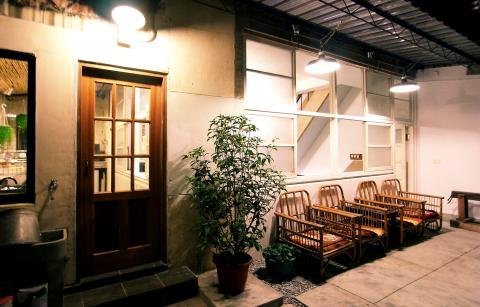
Photo courtesy of Kyle Hsieh
Owner Kyle Hsieh (謝文侃) grew up in the house, which was built five decades ago by his parents, who ran a nearby fabric store. He converted his childhood home into an inn three years ago.
In his early twenties, Hsieh went to Australia to earn a graduate degree and work. After his father had a stroke, however, he returned to Tainan. Hsieh’s parents had to move out of the house because his father could no longer navigate the ladder-like entry, and they worried about the fate of their former home.
“In Tainan City, there are so many old houses constantly being torn down,” Hsieh says. “These buildings represent the past experiences of a country or a place. The way things were, what people experienced, all that is kept and transmitted through things like old houses or furniture.”
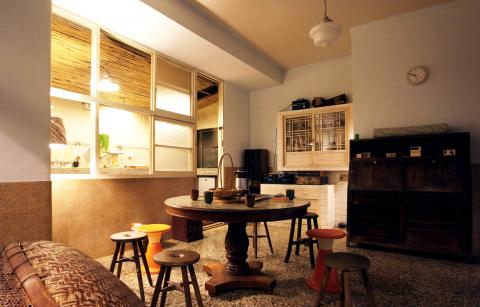
Photo courtesy of Kyle Hsieh
The Hsieh family decided to keep their house and turn it into an inn because they felt many visitors to Tainan did not linger long enough to truly appreciate it.
“Tainan people really love Tainan,” Hsieh says. “I always feel that visitors want to eat and drink here, but then they go to Kaohsiung or Kenting to stay. I wanted to create a place that would make people want to stay overnight, so they could see another side of Tainan.”
Old House Inn’s signature is its speckled gray terrazzo flooring, once a common sight in Taiwanese homes. During a year-long renovation, Hsieh installed new plumbing and wiring, but carefully preserved the interior’s original appearance and features, including an airy wooden balcony that overlooks the high-ceilinged living room.
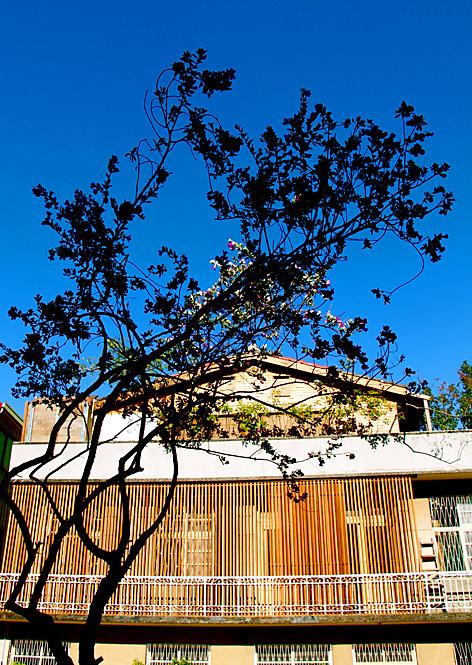
Photo courtesy of Kyle Hsieh
Hsieh’s family already owned most of the furniture in the house, which sleeps up to six people. He hired craftsmen to make new items using traditional methods, including tatami mats, mosquito netting and fluffy quilts for the communal sleeping space. During the renovation, Hsieh used wood salvaged from old houses torn down around Tainan. As soon as he heard of another structure scheduled for demolition, Hsieh and his crew rushed to the job site.
Hsieh is now dedicated to preserving Tainan’s recent history. Last November, he opened Old House 3 (謝宅3), an 80-year-old structure that used to be his uncle’s home. Old House 2 (謝宅2), once owned by his grandmother, is currently being renovated. (The numbers of the inn denote the order in which Hsieh began to work on them.) A cafe featuring a mixture of baroque and Japanese design — an interior style popular during Japan’s colonization of Taiwan — will open next month.
Hsieh says that about a third of Old House Inn’s guests come from abroad, including countries like France, Spain and Germany.
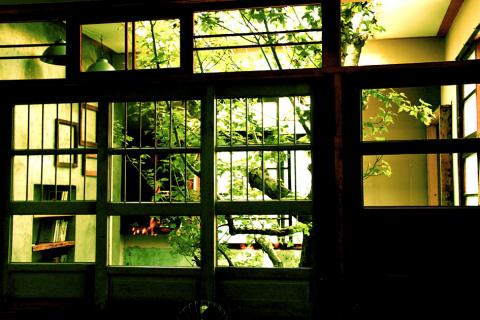
Photo courtesy of Kyle Hsieh
“Five-star hotels are the same everywhere. If you stay there, you don’t get a sense of place,” he says. “When foreign visitors stay at the Old House Inns, they get a feeling of what it’s like to be local. That’s what they want when they travel to a different country — to experience a different way of life.”
For more information, visit www.wretch.cc/blog/ohworkshop. Old House Inn sleeps up to six people (in addition to the communal sleeping area, there is also a double bed), while Old House Inn 3 has three levels that can be occupied by separate parties of two people each. For rates and reservations, call 0922-852-280 or e-mail oh@l-instyle.com.
Nostalgia: Iron Flower Windows Inn
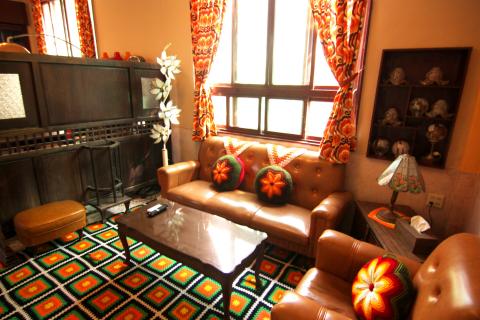
Photo: Catherine Shu, Taipei Times
Located in an alleyway lined with carefully tended potted plants and buildings dating from the Japanese colonial era, Iron Flower Windows Inn (鐵花窗民宿) was originally purchased by Lin Wen-pin (林文濱) to be his own residence. Lin built a rooftop garden with a small lawn and goldfish pond on the two-story structure and filled its two bedrooms, kitchen and living room with his favorite pieces from eight years of collecting vintage furnishings.
There was just one problem: Lin’s new puppy liked vintage things just as much as his master did — but instead of sitting on the leather sofas or carved wooden chairs, the bulldog terrier preferred to gnaw on them. After two months of deliberation, Lin decided to open the house, which is located near the Old Tainan Prefecture Hall (原台南合同廳舍, now the National Taiwan Museum of Literature, 國立臺灣文學館), as an inn.
The ground floor is split into a dining area and living room with a room divider carved from Chinese juniper wood that still retains a bit of fragrance. Lin found the piece in Chiayi and says it dates from 1918, making it the oldest item of furniture in the house. The living room has two large umber leather sofas, a floor lamp with glass shades shaped like graceful white flowers, and colorful dead stock wallpaper from the 1970s that Lin found online and installed himself. It also features two modern conveniences: a large plasma screen television and a DVD player.
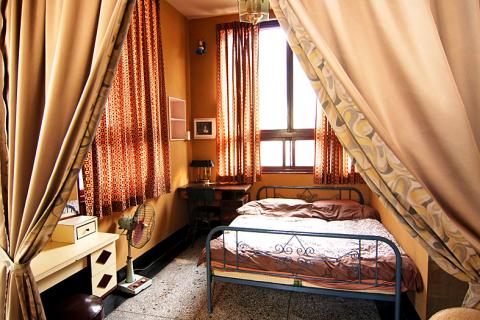
Photo: Catherine Shu, Taipei Times
Upstairs, the master bedroom and its connected sitting room are lined with tall windows and a screen door that leads onto a tiny, plant-lined balcony overlooking nearby colonial era structures. The sitting room is furnished with two comfy armchairs, a record player, albums from 1970s rock bands like Roxy Music (Lin used to be a music seller) and toys from his large collection of Beavis and Butthead memorabilia. A smaller bedroom across the hall has items from a doctor’s office, including a wooden revolving chair and a small stool that patients sat on as they were being examined.
Lin was originally attracted to the house, which was built 40 years ago by a prosperous real estate dealer, because of iron grills on its high windows that feature a pattern of four-leaf clovers. In addition to Iron Flower Windows Inn, items from Lin’s vintage collection also furnish his two nearby cafes, Kinks Pub (named after one of his favorite rock bands, www.wretch.cc/blog/KINKSPUB) and Wire (破屋, blog.roodo.com/kinks). Items that didn’t make it into his businesses are kept in two large storage rooms; Lin has lost track of how many pieces he owns.
Lin first became interested in vintage home decor because it brought back happy childhood memories. While most of his collection was found in Tainan, Lin travels all over the country attending auctions, hunting through flea markets and visiting estate sales.
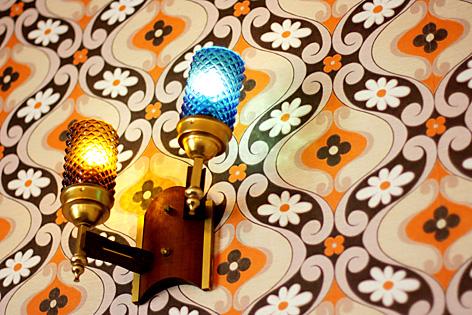
Photo: Catherine Shu, Taipei Times
“I might think something is really special, but the person who owns it wants to get rid of it because they have been staring at it for so long it just looks old and worn to them,” Lin says. “I get some of my most interesting items that way.”
For rates and reservations, visit www.wretch.cc/blog/kinks232 or call 0935-509-267. Iron Flower Windows Inn sleeps up to four people in two bedrooms.
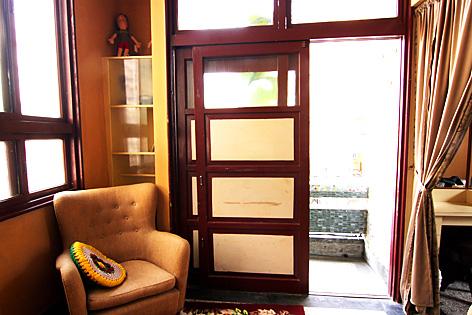
Photo: Catherine Shu, Taipei Times
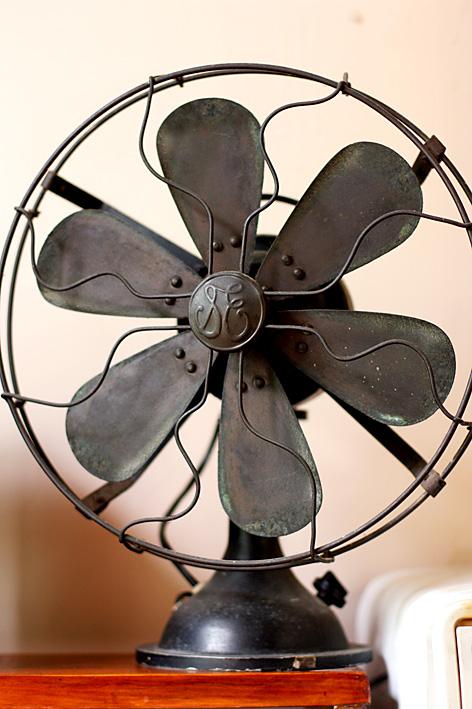
Photo: Catherine Shu, Taipei Times

Behind a car repair business on a nondescript Thai street are the cherished pets of a rising TikTok animal influencer: two lions and a 200-kilogram lion-tiger hybrid called “Big George.” Lion ownership is legal in Thailand, and Tharnuwarht Plengkemratch is an enthusiastic advocate, posting updates on his feline companions to nearly three million followers. “They’re playful and affectionate, just like dogs or cats,” he said from inside their cage complex at his home in the northern city of Chiang Mai. Thailand’s captive lion population has exploded in recent years, with nearly 500 registered in zoos, breeding farms, petting cafes and homes. Experts warn the

No one saw it coming. Everyone — including the Chinese Nationalist Party (KMT) — expected at least some of the recall campaigns against 24 of its lawmakers and Hsinchu Mayor Ann Kao (高虹安) to succeed. Underground gamblers reportedly expected between five and eight lawmakers to lose their jobs. All of this analysis made sense, but contained a fatal flaw. The record of the recall campaigns, the collapse of the KMT-led recalls, and polling data all pointed to enthusiastic high turnout in support of the recall campaigns, and that those against the recalls were unenthusiastic and far less likely to vote. That

The unexpected collapse of the recall campaigns is being viewed through many lenses, most of them skewed and self-absorbed. The international media unsurprisingly focuses on what they perceive as the message that Taiwanese voters were sending in the failure of the mass recall, especially to China, the US and to friendly Western nations. This made some sense prior to early last month. One of the main arguments used by recall campaigners for recalling Chinese Nationalist Party (KMT) lawmakers was that they were too pro-China, and by extension not to be trusted with defending the nation. Also by extension, that argument could be

Aug. 4 to Aug. 10 When Coca-Cola finally pushed its way into Taiwan’s market in 1968, it allegedly vowed to wipe out its major domestic rival Hey Song within five years. But Hey Song, which began as a manual operation in a family cow shed in 1925, had proven its resilience, surviving numerous setbacks — including the loss of autonomy and nearly all its assets due to the Japanese colonial government’s wartime economic policy. By the 1960s, Hey Song had risen to the top of Taiwan’s beverage industry. This success was driven not only by president Chang Wen-chi’s